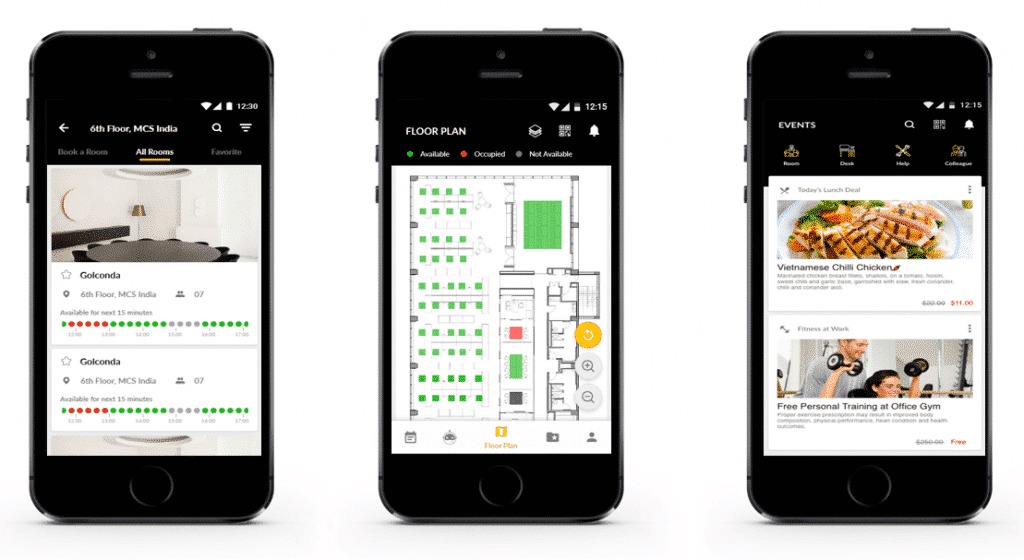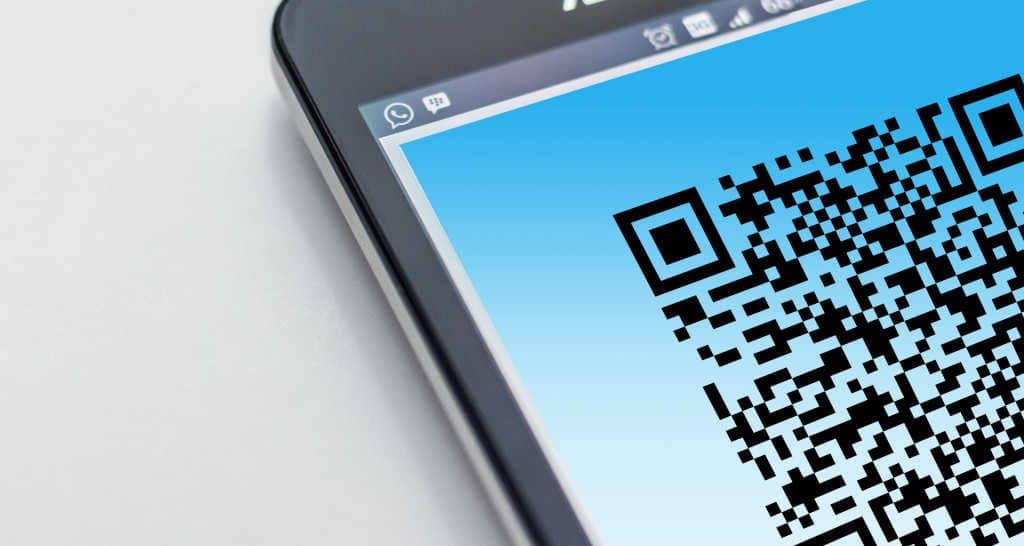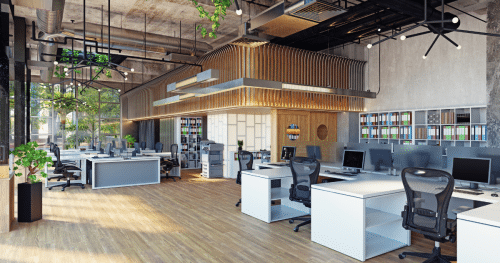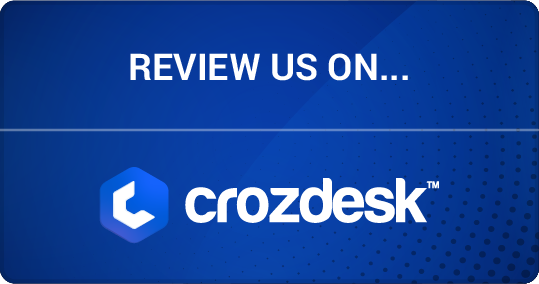Les applications mobiles facilitent la gestion des services généraux. Cela dit, elles changent d’orientation. C’en est fini des applications de gestion des services généraux essentiellement exploitées par les équipes spécialisées dans le domaine, qui parcourent les différents sites. Aujourd’hui, les applications mobiles GMAO sont de plus en plus conçues pour servir à l’ensemble des effectifs. L’un des facteurs sur lesquels repose cette évolution est…
L’émergence toujours plus effrénée du smartphone
Avec 3 milliards d’utilisateurs actifs de smartphones à l’échelle mondiale, la popularité de ces appareils n’est plus à prouver. Dans la sphère personnelle, nous sommes devenus profondément dépendants de nos mini-ordinateurs mobiles « toujours allumés » et des applications qu’ils contiennent. Ils nous permettent d’organiser tous les aspects de notre vie, des achats aux paiements en passant par la recherche d’itinéraires ainsi qu’une myriade d’autres fonctions utiles. Rien d’étonnant donc à ce que les applications intelligentes établissent également rapidement leur présence dans le monde de la gestion du travail et des services généraux. Pour contribuer autant que possible à la performance des bâtiments et au succès de leurs occupants, les applications mobiles GMAO doivent prendre en compte tous les acteurs de la scène des services généraux, des équipes et des gestionnaires de services généraux aux utilisateurs des bâtiments, en passant par les fournisseurs d’espaces de bureau et les propriétaires.
La mutation de l’environnement de travail
Les technologies numériques actuelles permettent aux travailleurs du savoir d’être mobiles et de travailler pour ainsi dire depuis n’importe quel endroit. Seulement voilà, les êtres humains aspirent également à un sentiment d’appartenance à un lieu et à une communauté. D’autant plus que pour travailler au mieux de nos capacités et atteindre nos objectifs, nous avons besoin d’espaces de travail qui favorisent une interaction dynamique et un partage des idées, le tout en laissant la possibilité d’effectuer un travail de concentration en solitaire.
C’est pourquoi la capacité à proposer un environnement de travail attractif, flexible et compatible avec la technologie devient fondamentale pour le succès d’une entreprise. Pour les employeurs, c’est un atout clé dans la course aux talents. Pour les propriétaires, il devient vital de maintenir la satisfaction des locataires et de consolider les perspectives de reconduction de bail.
À mesure que les espaces de travail flexibles gagnent du terrain, le besoin d’outils mobiles pour les prendre en charge s’intensifie. Sans surprise, les applications mobiles GMAO compatibles IdO se révèlent déjà être inestimables pour améliorer l’interaction homme-bâtiment et créer un environnement de travail plus agréable.
L’optimisation de l’environnement de travail physique
L’éclairage, la température, le bruit et la qualité de l’air influencent le bien-être et la productivité dans l’environnement de travail. Par conséquent, les entreprises ont de plus en plus recours aux capteurs IdO sans fil pour assurer le suivi de l’environnement de travail. Ils exploitent ensuite ces valeurs de mesurage pour optimiser le climat intérieur. Grâce aux applications mobiles, il devient même possible de paramétrer l’environnement (p. ex. la température, la climatisation, les chaises et les bureaux) en fonction des préférences des utilisateurs. En cas de dysfonctionnement, ces derniers peuvent également facilement fournir un feed-back via l’application.
Un lien plus étroit entre l’environnement de travail et ses utilisateurs
L’assistance personnelle tout au long de la journée de travail est un scénario qui devient très populaire. Elle permet par exemple au personnel de vérifier la disponibilité des espaces et de commander des services en déplacement. Les employés peuvent réserver un espace de stationnement ou un déjeuner le matin depuis leur domicile. Ils peuvent également vérifier leur emploi du temps et être avertis lorsqu’un visiteur arrive, obtenir des instructions pour trouver leur chemin et localiser les membres de l’équipe dans un environnement de travail flexible, demander un service ou introduire un ticket en déplacement en scannant un code QR, ou encore recevoir des suggestions personnalisées sur la base de leur historique. Et tout cela à partir de leurs téléphones et à l’aide d’une interface de conversation, ce qui facilite la navigation dans l’environnement de travail. Un exemple de ce type d’applications est l’application Workplace de Spacewell, qui utilise des données en direct issues de capteurs et une visualisation sur des plans d’étage pour fournir des indications en temps réel.

Les applications mobiles représentent un bon moyen d’informer les utilisateurs du bâtiment des services spécialisés disponibles dans ou à proximité du bâtiment. Pensez aux centres de sport et de remise en forme, aux restaurants ouverts sur le temps de midi et aux services de livraison de repas, aux garderies ou aux services de blanchisserie, de nettoyage à sec et de repassage. Lorsque les organisations intègrent des tiers et promeuvent ce type de messages de service via l’application, il devient plus facile pour les employés d’équilibrer vie professionnelle et vie familiale.
La création de connexions interpersonnelles et d’un écosystème de soutien
Un autre aspect consiste à ajouter des fonctionnalités sociales afin de mettre en relation des personnes au sein de l’environnement de travail. Dans un contexte de croissance de l’économie à la demande, les applications mobiles constituent un excellent moyen de créer un sentiment de communauté et d’appartenance. Elles font office de plateforme sociale à l’échelle de l’entreprise, mettant en contact des personnes qui désirent partager des trajets ou sont à la recherche de compagnie pour le déjeuner. Bref, connecter le bâtiment à ses utilisateurs et à l’environnement améliore l’expérience globale des collaborateurs.
Des données plus performantes au profit des occupants
La collecte de données par le biais d’applications mobiles GMAO est rapide et précise. Lorsque les occupants réservent un espace via leurs applications, les gestionnaires obtiennent des données plus granulaires sur l’utilisation de l’espace. De même, lorsque les employés peuvent facilement introduire des tickets, les informations relatives aux actifs deviennent plus précises. Qui plus est, la capacité des occupants à réserver des services et à fournir un feed-back instantané au moyen d’une application se traduit par une vue d’ensemble plus complète de la qualité du service et des points d’amélioration.
Les dernières évolutions des applications mobiles GMAO
Exploitation des données en temps réel grâce à l’intégration IoT
Les données en direct issues de capteurs constituent une aide très précieuse afin de fournir une assistance personnelle dans l’environnement de travail ou de déclencher des interventions et des services. Traitées au sein d’une plateforme d’analyse en temps réel, elles peuvent être mises directement à la disposition des utilisateurs finaux dans leurs applications mobiles.

Navigation multicanal
Nombreux sont les professionnels qui utilisent plusieurs appareils, par exemple un ordinateur, une tablette et un smartphone. Des efforts sont dès lors consentis pour que la navigation entre les différents appareils soit irréprochable. Les utilisateurs peuvent commencer une tâche sur un appareil et la continuer sur un autre en toute simplicité.
Codes QR/étiquettes NFC

Les codes QR sont faciles à utiliser pour les occupants (et très utiles pour les techniciens de maintenance). La lecture des codes QR permet d’identifier directement un objet et, par exemple, de créer un ticket concernant le remplissage d’un distributeur de boissons.
En conclusion
Il est facile de voir comment les applications mobiles associées à l’internet des objets rendent nos lieux de travail plus intelligents. Les bâtiments deviennent des centres de services et d’équipements qui améliorent l’expérience totale de l’utilisateur. L’application est l’écosystème qui rassemble tout cela et crée de la valeur pour les occupants, les employeurs et les propriétaires.









